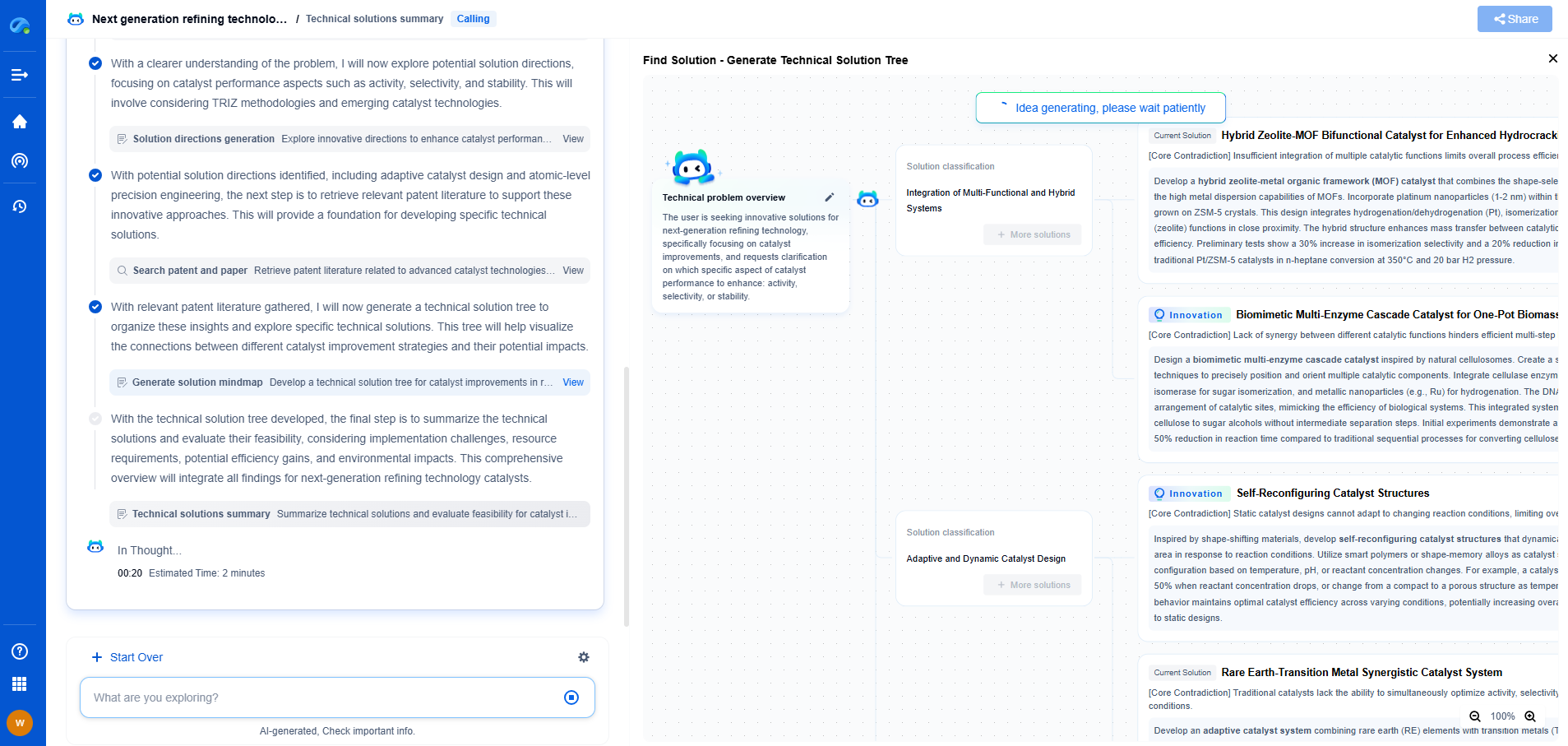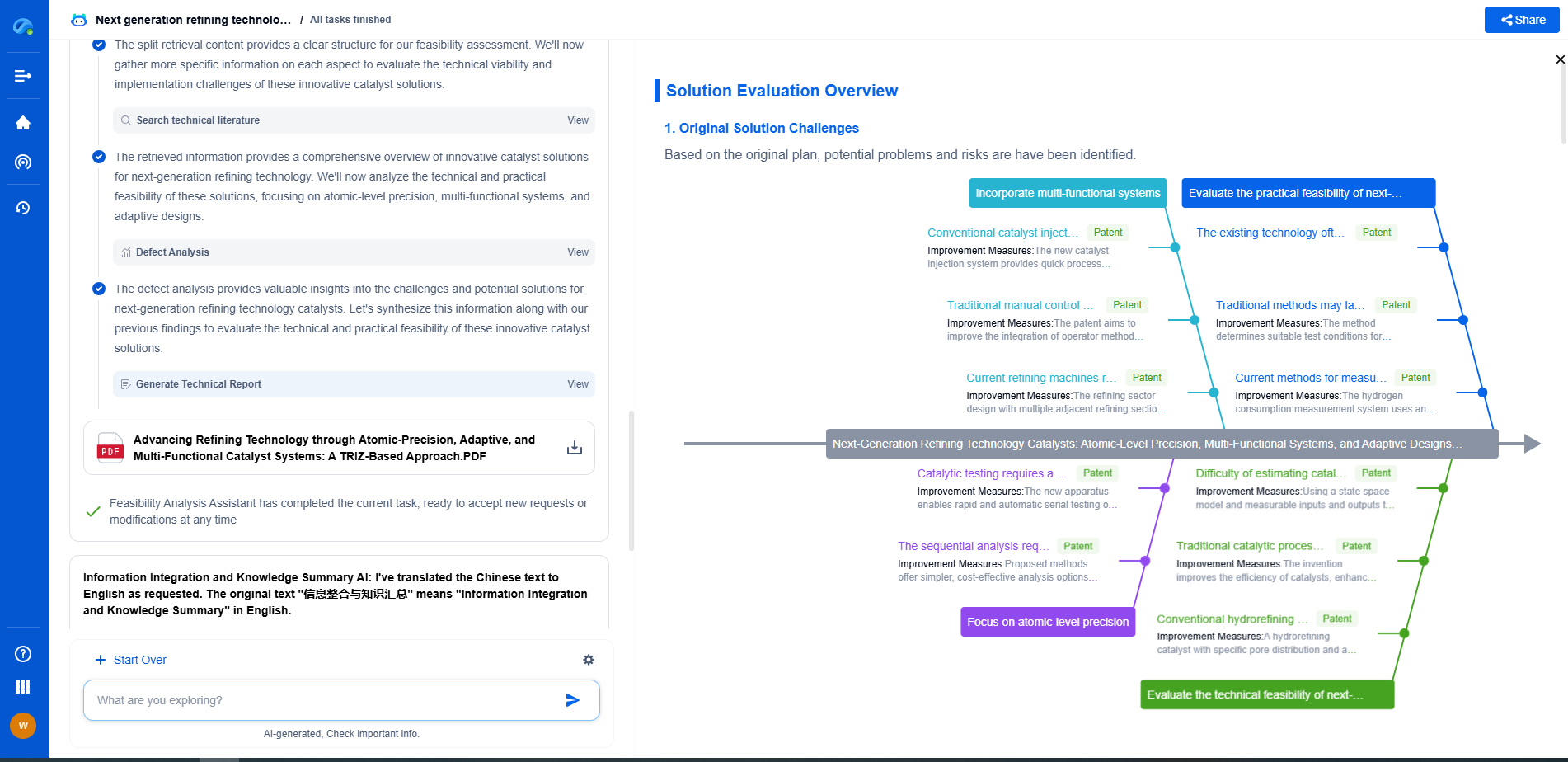What is the Role of Gradient Descent in Model Training?
JUN 26, 2025 |
At the heart of machine learning and artificial intelligence lies a powerful optimization technique known as gradient descent. This algorithm plays a crucial role in training a wide variety of models, helping to minimize errors and improve accuracy. To truly appreciate gradient descent's function in model training, it is essential to understand its mechanics and applications.
What is Gradient Descent?
Gradient descent is an iterative optimization algorithm used to find the minimum of a function. In the context of machine learning, this function typically represents the cost or loss function of a model. The goal is to adjust the model's parameters—such as weights in the case of neural networks—until the loss is minimized, indicating that the model makes accurate predictions.
How Gradient Descent Works
Imagine you are hiking in a foggy mountain range and trying to reach the lowest point in the valley. You do not have a map, but you do have a compass that tells you which direction is downhill. Gradient descent operates under a similar principle. It starts at an arbitrary point and takes steps proportional to the negative of the gradient of the function at that point. Each step moves the model parameters closer to the local minimum.
Key Components of Gradient Descent
1. Learning Rate: A crucial component of gradient descent is the learning rate, which determines the size of each step taken towards the minimum. A learning rate that is too small can make the process slow and tedious, while a rate that is too large can cause overshooting and potential divergence from the solution.
2. Convergence: To ensure the algorithm stops once it has found the minimum, convergence criteria are established. Convergence is reached when changes in the loss function between iterations fall below a certain threshold or when a specified number of iterations have been completed.
3. Variants of Gradient Descent: Depending on the problem and dataset size, different variants of gradient descent can be employed. Batch gradient descent uses the entire dataset for each update, while stochastic gradient descent uses a single data point. Mini-batch gradient descent, a compromise between the two, updates parameters using a subset of the data.
The Role of Gradient Descent in Machine Learning
Gradient descent is indispensable in the training process of numerous machine learning models. Whether you are building a linear regression model, a support vector machine, or a deep neural network, gradient descent helps in fine-tuning the model parameters to achieve optimum performance.
1. Optimizing Neural Networks: In neural networks, gradient descent is used to minimize the error in output predictions. The backpropagation algorithm calculates the gradient of the loss function with respect to each weight by the chain rule, allowing for adjustments via gradient descent.
2. Regularization and Generalization: Gradient descent can incorporate regularization techniques to prevent overfitting and enhance the model's ability to generalize to new data. By adjusting the loss function with regularization terms, gradient descent helps maintain a balance between fitting the training data and keeping the model simple.
3. Real-time and Large-scale Applications: For real-time applications or large datasets, variants like stochastic and mini-batch gradient descent offer significant benefits. These methods can speed up training and handle data that cannot be loaded into memory all at once.
Challenges and Considerations
Despite its utility, gradient descent is not without challenges. It may converge to a local minimum rather than a global one, especially in highly non-convex functions common in deep learning. Selecting an appropriate learning rate can also be tricky and often requires experimentation.
Conclusion
Gradient descent is a cornerstone of model training in machine learning, offering a robust method for optimizing model parameters. By understanding its principles and applications, data scientists and engineers can harness its power to build accurate and efficient models. As advancements continue in machine learning, the refinement and adaptation of gradient descent will remain pivotal in tackling complex problems and driving innovation forward.
Unleash the Full Potential of AI Innovation with Patsnap Eureka
The frontier of machine learning evolves faster than ever—from foundation models and neuromorphic computing to edge AI and self-supervised learning. Whether you're exploring novel architectures, optimizing inference at scale, or tracking patent landscapes in generative AI, staying ahead demands more than human bandwidth.
Patsnap Eureka, our intelligent AI assistant built for R&D professionals in high-tech sectors, empowers you with real-time expert-level analysis, technology roadmap exploration, and strategic mapping of core patents—all within a seamless, user-friendly interface.
👉 Try Patsnap Eureka today to accelerate your journey from ML ideas to IP assets—request a personalized demo or activate your trial now.
- R&D
- Intellectual Property
- Life Sciences
- Materials
- Tech Scout
- Unparalleled Data Quality
- Higher Quality Content
- 60% Fewer Hallucinations
Browse by: Latest US Patents, China's latest patents, Technical Efficacy Thesaurus, Application Domain, Technology Topic, Popular Technical Reports.
© 2025 PatSnap. All rights reserved.Legal|Privacy policy|Modern Slavery Act Transparency Statement|Sitemap|About US| Contact US: help@patsnap.com

